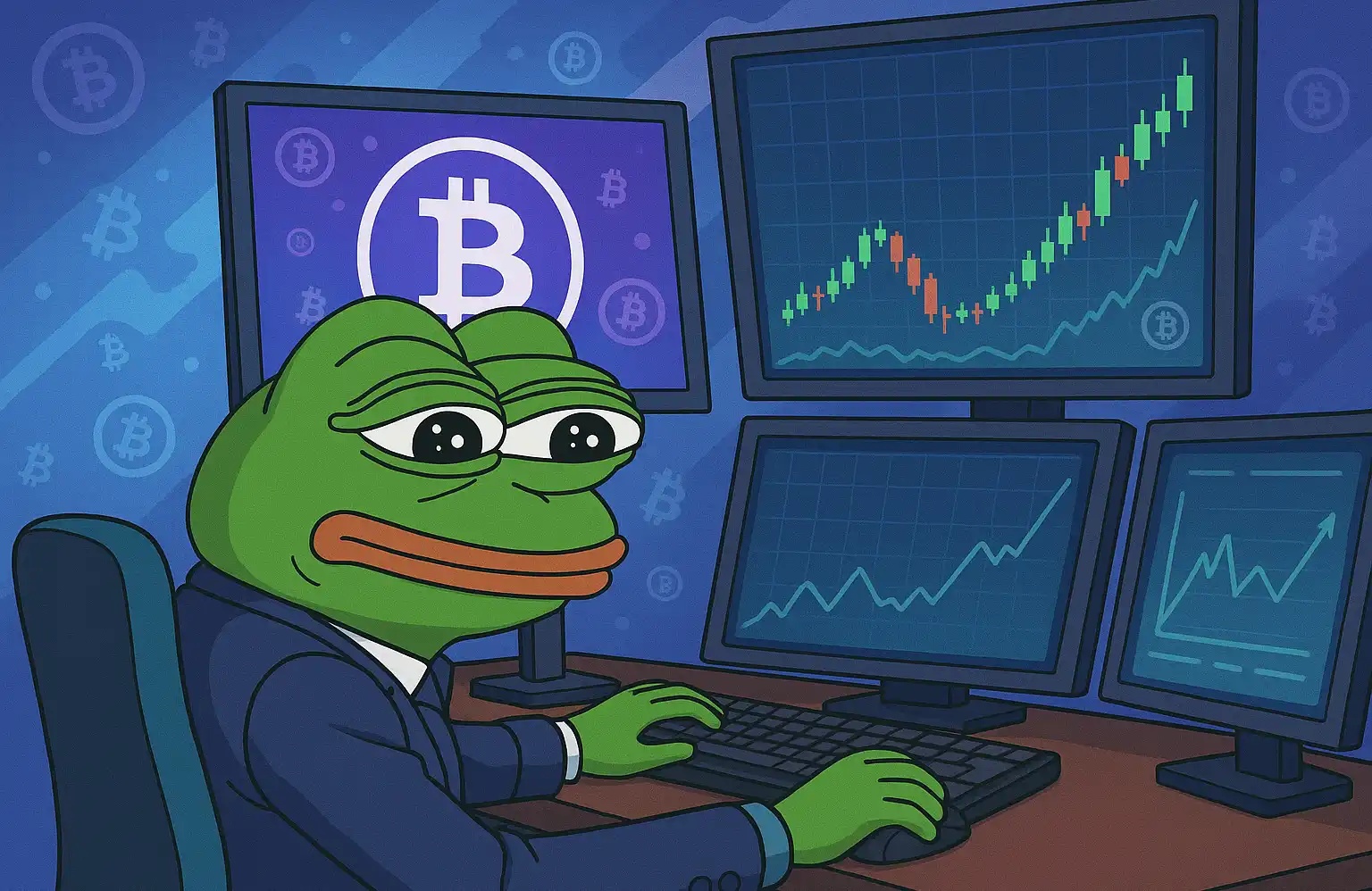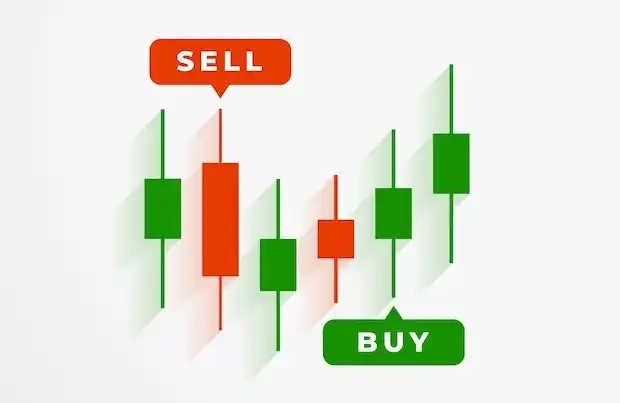NFTfi Landscape Research: How NFTfi Leads the Next Bull Market Wave.
Original author: Loki from New Fire Technology
One, we are on the eve of the NFTfi explosion
First of all, it needs to be clear that the NFT and NFTfi markets have experienced a significant decline, but this does not mean that the NFT or NFTfi market has lost its growth potential. NFTfi is still one of the markets with the highest potential for growth.
Following the maturity curve of technology, when a new technology emerges, it will climb to the top at the craziest speed, experience possible bubble bursts, and then slowly rise steadily, entering true large-scale adoption. Looking at the development of the encryption industry, this development path has been verified many times, from the beginning of BTC, to the PoW craze, to the ICO craze and DeFi Summer, all of which are the same.

Source:Google
When discussing the market space of NFT/NFTfi, it is inseparable from the two important data mentioned in the previous research report: NFT market capitalization and NFT category proportion. According to the statistics at that time (March 2023), the market value of the core market with high value and high liquidity was only 5.9 billion US dollars, which is about 4.2% of the stablecoin market value (corresponding to the DeFi track) and 2.7% of the ETH market value (corresponding to the ETH LSDfi track).
 Translation:
Translation:
Source: Public data compilation
(Note: The content only contains HTML tags and punctuation marks, which will be returned as is without translation.)
The proportion of NFT categories can explain this phenomenon to some extent: PFP, Art, and Collectibles account for more than 75% of the total market value, followed by Utility, Land, and Game categories. Due to the characteristics of the categories, most NFTs currently do not have a rigid application scenario and do not have the ability to generate profits. The development cycle faces a binary choice of becoming a blue chip or entering liquidity exhaustion. From the perspective of funds, PFP, Art, and Collectibles mainly represent speculative and social needs, and the strength of demand is related to the overall funding of the market. The change in market size has a positive correlation with the cryptocurrency market, and it is difficult to break through the "market" ceiling, making it difficult to generate excessive growth.

Source:NFTGo
However, at the same time, the dominance of PFP will not continue to exist, and some new products are worth looking forward to. For example, the identity ecosystem represented by ENS and SBTs, utility NFTs in the fields of gaming/social/education applications, and Financial NFT and RWA opportunities led by SOLV and the ERC-3525 protocol; the structural market growth opportunities brought by these non-PFP category NFTs are far greater than the systematic growth opportunities.
Using Financial NFT as an example, the average annual financing amount of the cryptocurrency industry from 2020 to 2022 is about 30 billion US dollars. If 10% of it is realized through NFT or SFT (semi-fungible tokens) in the future, it will bring 6 billion US dollars of growth to the NFT market, including 3 billion US dollars from fund-raising and 3 billion US dollars from investment. 10% of DeFi TVL will bring 4.8 billion US dollars of growth. These two areas alone can bring 183% growth to the current NFT market. As shown in the figure below, from a holistic perspective, the stock market represented by PFP will be constrained by the scale of the homogeneous token market, but the incremental market has relative independence and may even exceed the scale of the homogeneous token market. NFT or NFTfi is not lacking in new narratives and will slowly but surely exceed the overall growth rate of the cryptocurrency market.

二、分赛道市场展望:交易和借贷的市场空间远不止如此
Translation:
II. Market Outlook for Segmented Tracks: The Market Space for Trading and Lending Goes Beyond That
In the first part of this research report ("NFTfi Track Panorama Study"), the focus is on explaining the current market landscape of NFTfi. Looking at the different tracks, NFT trading and NFT lending have already begun to take shape, and the future development direction is mainly focused on integration and efficiency improvement. The viewpoint here remains unchanged: the first and last thing to improve in NFT trading is liquidity. Although we have seen the rapid development of Blur in the past year, personally, I still think that Blur is far from the true endgame. In the past few months, I have discussed further improvement measures for NFT trading with many friends (including a large number of relevant team members). So far, the ideas I can think of and the ideas I have learned from other friends include:
- Use veToken (or time lock) to fix LP and provide predictable and sustainable liquidity supply (suitable for combination with AMM mechanism).
- Establish a dedicated clearing agreement (or an oracle with clearing functions) to act as a counterparty for clearing and improve liquidity on the buy side.
- Building NFT-based options/dual-currency financial protocols (theoretically, other types of derivatives also have similar combinability space), acting as a counterparty to improve liquidity on the buy side.
- Partial fragmentation (this approach is also applicable to lending agreements, but personally I do not like this method)
- Providing liquidity with LSD assets as the underlying asset to reduce the cost of liquidity supply.
- Combining INO+OHM, an AMM type NFT trading pool is established from the initial issuance.
- The applicability of issuing reverse IL positions or synthetic asset models in vAMM+.
Of course, these are just preliminary ideas. In many cases, when we solve one problem, more problems may arise. Friends who are interested in this direction are welcome to further communicate with me.
The second opportunity is lending. Considering that NFTfi, Bendao, Paraspace, and Blur have already provided quite a lot and sufficiently excellent solutions, this track seems to be slightly crowded. In my opinion, the short-term opportunity lies in yield optimization, while the long-term opportunity lies in aggregation. There are many experiences that can be learned from short-term yield optimization, such as p2p matching optimization points for FT pools, introducing yield income, asset reuse (LSD&LP), and possible interbank borrowing. Long-term aggregation is relatively abstract. If we separate the demand for borrowing and lending and think of it as a scatter plot, point-to-point lending is a scatter plot, while point-to-pool lending is a continuous curve composed of many points (and this curve is dynamically changing). Then the next problem is very similar to trading. We need more and denser points or lines. Derived ideas include: lending aggregation, trading, and the expansion of derivatives and combinability.
Three, Market Opportunities in Segmented Tracks: 3 Growth Factors, 2 Demands, and 2+N Implementation Solutions for Derivatives
The third opportunity is derivatives. It is discussed separately because compared to the first two tracks, derivatives are a more blue ocean market. This has been mentioned in previous research reports, where NFT derivatives show very low market penetration rates, both in terms of the number of active accounts on the user side and in comparison with homogeneous tokens. Based on the breakdown of market size growth shown in the following figure, the NFTfi track has three growth factors: the growth of the stock NFT market (positively correlated with the overall cryptocurrency industry), the growth of the incremental market, and the growth of market penetration rate. For derivatives, the third factor (market penetration rate) has a higher growth multiple.

By the way, it is worth mentioning that assets outside of the PFP category have a larger space for integration with NFTfi. They may have more predictable volatility and more reliable value support, such as bills and some utility NFTs that can generate cash flow (possibly in cryptocurrency) and can be more effectively valued and traded. Therefore, the growth of the incremental market brings nonlinear promotion to NFTfi.
The second source of confidence in the NFT derivative track is demand. From the experience of the cryptocurrency market, derivatives often achieve good growth in bear markets, driven by demand. Generally speaking, the demand for derivatives is mainly hedging (or risk swapping) + speculation. The risk aversion characteristics in bear markets and the reduction of investment choices under limited funding will bring demand to derivatives. In addition, one of the important sources of demand for early cryptocurrency derivatives was BTC/ETH miners, and now Blur, NFT lending, and NFT staking all bring yields to NFTs, and the growth of pure hedging demand, as well as real users and real protocol income for NFT derivatives, will also be foreseeable.
The third point that needs to be elaborated on is how to build a good NFT derivative product. Analyzing the entire NFT derivative product requires a very large amount of space, so topics such as index products, options, structured products, etc. may be presented in the form of special research reports in the future. Here, we mainly discuss futures contracts.
First of all, we need to determine what methods can be used to achieve NFT futures trading. Due to the scarcity and low order rate of NFT itself, delivery-type products are not suitable for constructing NFT futures (perhaps suitable for options). The remaining arsenal I can think of includes the following five categories. Among them, order book perpetual contracts and vAMM have been implemented, and some teams are exploring the other modes.
 Source: 0xLoki Compilation.
Source: 0xLoki Compilation.
The key issue for FT derivatives to consider next is what? I think it is still liquidity, specifically including three points: 1) how to price? 2) Who will provide (or act as a counterparty) when there is insufficient liquidity? 3) How to settle/handle liquidation? From the current situation, NFEX and NFTperp have chosen perpetual contracts and vAMM to provide preliminary solutions to these three issues. In addition, a characteristic of the NFT derivatives market is an extremely unbalanced long/short ratio, which also requires higher funding rates and dynamic opening fees, and should be one of the factors we consider when comparing products.

Source: 0xLoki Compilation
From the comparison, NFEX and NFTperp are quite similar in terms of data, and both have their own advantages and disadvantages in terms of product solutions. NFEX can provide lower transaction fees and a wider range of trading pairs (as well as faster trading pair launch speed), while NFTperp provides a non-custodial solution. However, due to the imbalance of long and short positions, the trading price of NFTperp itself has a large deviation. Although NFTperp has set up Funding Rate+additional tx fee to solve this problem, it is obviously not enough (long positions still need to pay a three-digit annualized funding rate).

Source:NETperp Docs
Four, in conclusion: store up grain and delay claiming the throne.
Overall, my judgment is as follows: in the medium to long term, the growth rate of the NFT market will far exceed that of the cryptocurrency market; and the growth rate of the NFTfi market will far exceed that of the overall NFT market, while the market growth rate of NFT derivatives will far exceed that of NFTfi.
The track tide originates from the market tide. When the liquidity is abundant enough, it will inevitably bring about excessive investment. The market has sufficient funds to subsidize and support high valuations. However, in the long run, whether it is the primary or secondary market, pure burning money/speculation will eventually pass. It is also at this stage that protocols that can realize a complete business closed loop and create real income/value will continue to survive and emerge from the valley of death. The market will once again return to "technology-driven" and "demand-driven". It is worth mentioning that although now is not a good time to issue coins, among the top NFTfi protocols, Bendao and Blur have already issued coins, and NFTFi may not issue coins in the end. The remaining Opensea (which has already issued NFT), Paraspace, NFEX, and NFTperp are likely to issue coins, which is worth looking forward to.
Welcome to join the official BlockBeats community:
Telegram Subscription Group: https://t.me/theblockbeats
Telegram Discussion Group: https://t.me/BlockBeats_App
Official Twitter Account: https://twitter.com/BlockBeatsAsia


 Forum
Forum Finance
Finance
 Specials
Specials
 On-chain Eco
On-chain Eco
 Entry
Entry
 Podcasts
Podcasts
 Activities
Activities
 OPRR
OPRR








